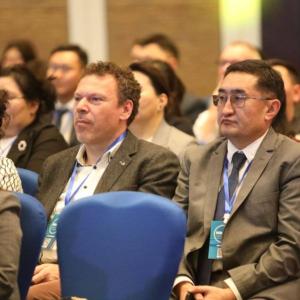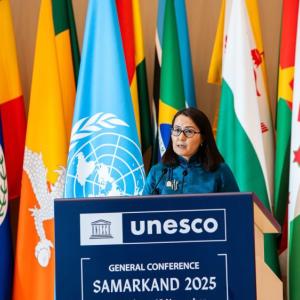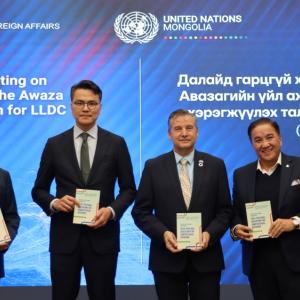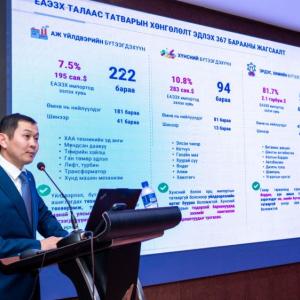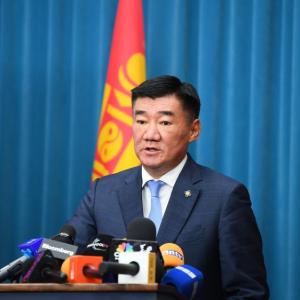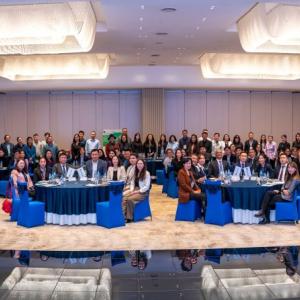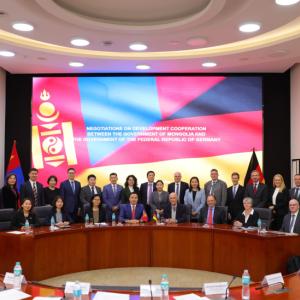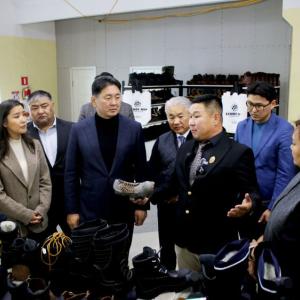Cooperation Discussed on Introducing Electron Beam Technology in the Healthcare Sector of Mongolia
Society
Ulaanbaatar, October 9, 2024 /MONTSAME/. State Secretary of the Ministry of Health Ochirbat Dagvadorj met with the team of experts on the “Supporting the Use of Electron Beam Technology and Its Applications in Food, Agriculture, Industry, Human Health, and the Environment” Project, implemented by the International Atomic Energy Agency (IAEA), and exchanged views on cooperation.
At the meeting, State Secretary Ochirbat expressed gratitude to the team of experts for visiting Mongolia and successfully organizing the training on "Applications of Electron Beam Technology" as part of the Project.
The IAEA is implementing this project in the Asia-Pacific region under the Cooperation Agreement for the 2024-2028 period. The Project aims at using nuclear technology for industrial purposes, introducing irradiation equipment and technology, and promoting research, development, and innovation. A joint working group was formed including the Ministry of Food, Agriculture, and Light Industry, the Ministry of Health, the Ministry of Education, and the Nuclear Energy Commission of Mongolia (NEC).
This working group, together with the team of experts, recently held a seminar at the Ministry of Food, Agriculture, and Light Industry of Mongolia on "Applications of Electron Beam Technology." It provided information to both public and private sectors in the fields of food, agriculture, and healthcare.
During the meeting, Matthew Keskula, a representative from the U.S. Department of Energy's Office of Radiological Security, expressed gratitude for the active participation of healthcare professionals from both public and private sectors in the seminar. He gave a brief overview of how electron beam technology can be used in healthcare and mentioned that they are currently developing a feasibility study for establishing an irradiation center that would use electron beam technology (e-Beam/X-ray).
Currently, Mongolia sterilizes its medical devices using ethylene oxide gas. However, ethylene oxide poses risks to both human health and the environment. Using electron beam technology for sterilizing single-use medical devices would not only reduce costs but also improve safety. The electron beam irradiation method is advantageous because it fully destroys microorganisms without damaging the structure of the products.
At the meeting, State Secretary of the Ministry of Health Ochirbat Dagvadorj expressed readiness to collaborate on aligning the technology for sterilizing single-use medical devices in Mongolia with international standards.
The expert team includes Matthew Keskula from the U.S. Department of Energy's Office of Radiological Security, Mary Jeon, Head of the Asia-Pacific Regional Cooperation Project Division, Jennifer Elstir, Alternative Technology Program Manager at Pacific Northwest National Laboratory, Suresh Pillai, Director of the National Electron Beam Research Center at Texas A&M, Oscar Acuna, International Program Leader, and Jacob Ellis, Senior Electrical Engineer at Pacific Northwest National Laboratory.
 Ulaanbaatar
Ulaanbaatar




















